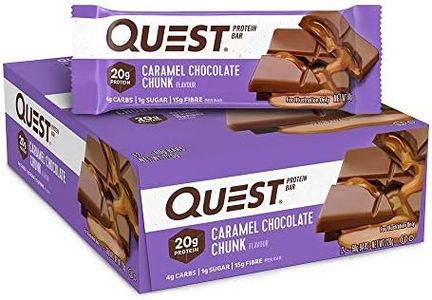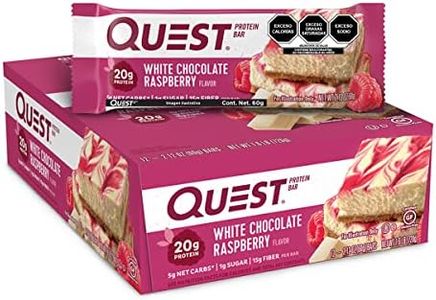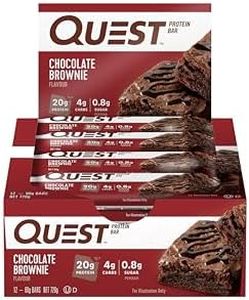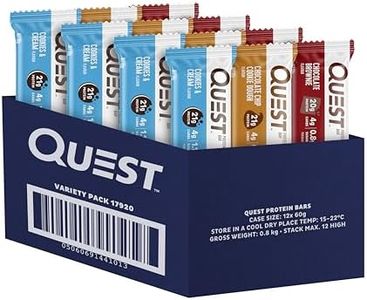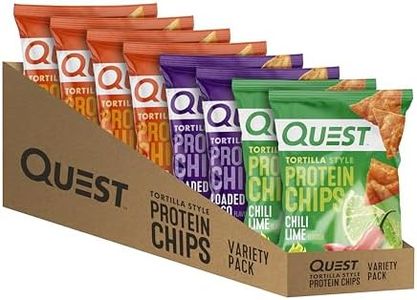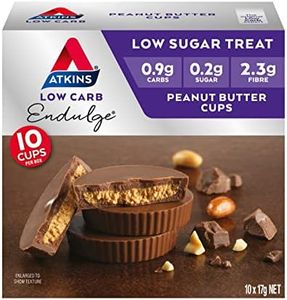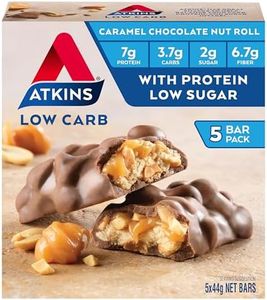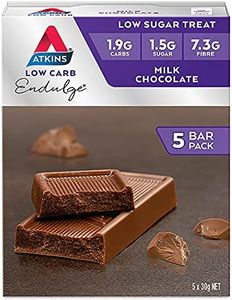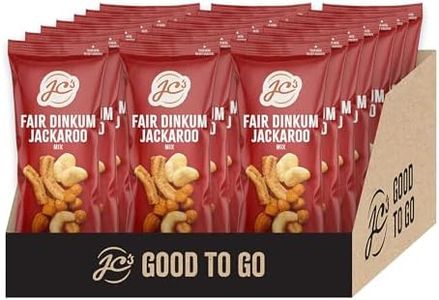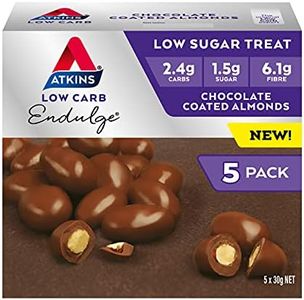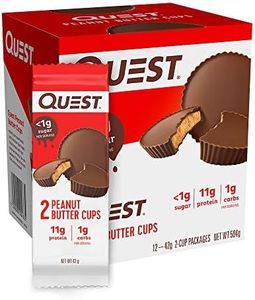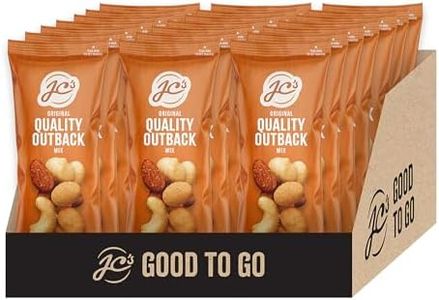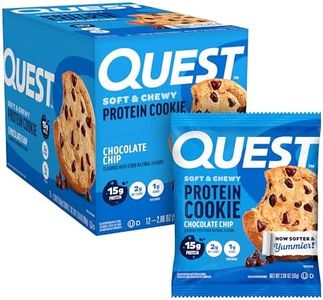We Use CookiesWe use cookies to enhance the security, performance,
functionality and for analytical and promotional activities. By continuing to browse this site you
are agreeing to our privacy policy
10 Best Diabetic Snacks
From leading brands and best sellers available on the web.Buying Guide for the Best Diabetic Snacks
Choosing diabetic-friendly snacks can be a simple process if you focus on a few key nutritional details. The ideal snack should help you maintain stable blood sugar levels, provide lasting energy, and fit comfortably into your daily meal plan. When picking a snack, always start by checking the nutrition label and ingredient list for clues on how it will impact your blood sugar, and think about when and why you'll be eating the snack—for example, as a quick boost, a meal replacement, or to stave off hunger between meals.Carbohydrate ContentCarbohydrate content tells you how many grams of carbs are in a serving of the snack. This is crucial because carbs have the biggest impact on your blood sugar. Snacks with very low carbs (under 10g per serving) might be good for keeping blood sugar steady, while those with moderate carbs (10-20g) can provide a gentle energy boost. Snacks above 20g per serving may raise your blood sugar more quickly. Choose a snack with the carbohydrate level that fits your current blood sugar management plan or as advised by your healthcare provider.
Fiber ContentFiber slows the digestion of carbohydrates and can prevent sudden blood sugar spikes. Snacks high in fiber (at least 3g of fiber per serving) are often a better choice for people with diabetes, as they help keep you fuller longer. Snacks with low fiber content are digested more quickly, possibly leading to quicker changes in blood sugar. If you want to stay full and keep blood sugar stable, pick higher-fiber options.
Added SugarsAdded sugars are those that are not naturally found in foods but are included during processing. These can cause rapid increases in blood sugar. Snacks with zero or very low added sugars are usually best for diabetics. Watch out for ingredients like corn syrup, cane sugar, honey, or anything ending in '-ose,' as these indicate added sugars. Choose snacks with minimal or no added sugars for better blood sugar control.
Protein ContentProtein helps balance blood sugar by slowing the absorption of carbs and making you feel full. Snacks with at least 5g of protein per serving can be very satisfying and suitable for people managing their blood sugar. Lower-protein snacks may not keep you full for long. If you're looking for a snack to tide you over between meals, higher protein is generally preferred.
Portion SizePortion size tells you how much of the snack you should eat in one sitting. Even a healthy snack can cause blood sugar problems if you eat too much. Look for snacks that have realistic portion sizes and remember to stick to them. Adjust the portion based on your own energy needs and blood sugar goals, and always check the serving size when you read the nutrition label.
Ingredient List SimplicityA short and simple ingredient list with recognizable foods is usually best for diabetics. Highly processed snacks with many unfamiliar additives may contain hidden sugars or unhealthy fats. Look for snacks where whole grains, nuts, seeds, or vegetables are the main ingredients. Picking snacks with fewer, more natural ingredients can often support better blood sugar management.
